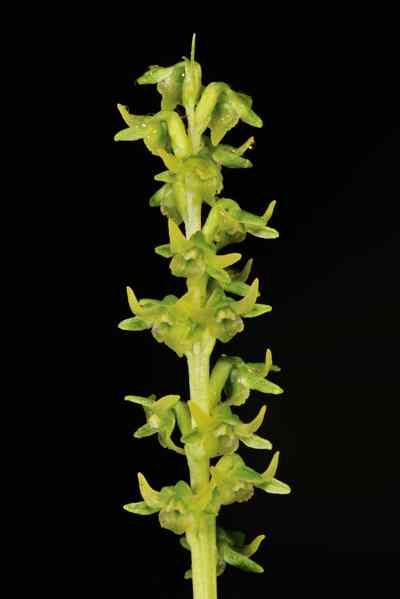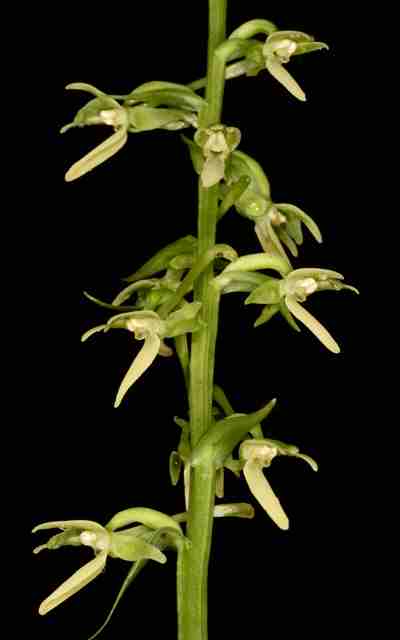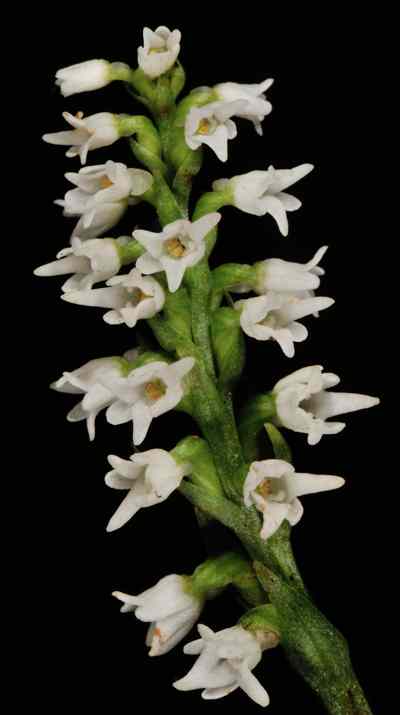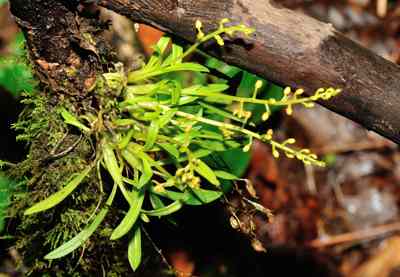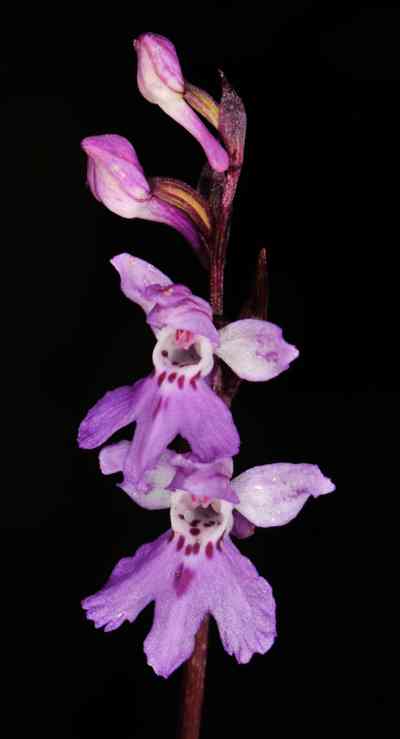The Plant
Terrestrial. Tuber small, globular to ovoid, with few stout long naked roots arising from the base of the stem. Whole plant 8 to 12 cm in height. Stem angled or ribbed, almost two third of the plant height, with a long tubular sheath at its base a long narrow lanceolate bract at its apex. Leaf two, closely arranged juts above the base of the stem, elliptic to lanceolate, narrowed at its base to a long tubular sheath, veined, diagonally erect, 3 to 5 cm long and 1.5 cm in width. Flower many, densely arranged in a short spike.
The Flower
Flower small, less than 1 cm across, pendulous. Sepals unequal, dorsal ovate with broad base, smaller than the lateral pair, diagonally erect; lateral lanceolate, acute, pointing forward.Petalslanceolate, longer than the sepals, acute. Lip as long as the petals or slightly longer than it, lanceolate, acute, fleshy and pointing downwards. Floral bract small, narrow, erect, lanceolate, almost half the size and arising from the lower base of the erect, twisted and beaked ovary.
Sepals and floral bract pale green. Petals and lip yellowish green.

The Pursuit
There was no mention about this species in the monumental work of King and Pantling. Hence, I was not aware about its presence in the region. The species has been mentioned in another work on orchids of the region, but without any documentary evidence. Many publications with reports of various species without proper fieldwork or documentary evidence have compounded to the confusion prevailing in the study of orchids. Hence, I was very careful in finding each species from its natural habitats.
My alpine flower hunt was for continuous six months spread across a vast region from an altitude of 9000 ft to 18000 ft, thus covering most of the alpine areas. The plan of living there for six continuous months helped in bringing out many evidences of several plants, which were never been document earlier. Moreover, I was able to physically inspect and study several areas where no humans had ever ventured.
In the third month of the alpine hunt, I was working relatively at higher altitudes, above 13,000 ft. At those heights the rains clear off for bright sunny days. The floors of the forests and slopes will be totally covered with several hundred species of plants. Most of the alpine plants are small herbs except the Rhododendrons, which can grow up to 3 to 4 ft in height. Looking for small herbs, less than 15 cm in height, from a vast open area fully covered with thousands of species is like searching for a needle from a haystack. I generally concentrate on open patches and streamside to study the pattern of vegetation. After understanding the habitat I look for specific species. This method of pursuit was comparatively easier than searching the whole area for a particular species. By the mid of that month, I found 12 small orchid plants next to a small stream. The plants were very small with a pair of leaves and a small spike. Even though I was not able to identify the species, it was understood that the flowers would bloom in another 15 to 20 days. In the next two weeks, I visited the location many times to make sure all the plants were intact. Finally it bloomed and I was able to identify the plants as this species.
After the identification I surveyed other areas for this species, especially those regions similar in habitat. From several locations I found more than 200 specimens of this species in that month itself. It is something to wonder why King and Pantling were not able to locate a plant, which is in abundance? They were able to describe with illustration of many species which were even considered rare to very rare during their times.
Reference:
There is no reference of this species in the The Orchids of the Sikkim-Himalayas by Sir. George King and Robert Pantling (1898).
